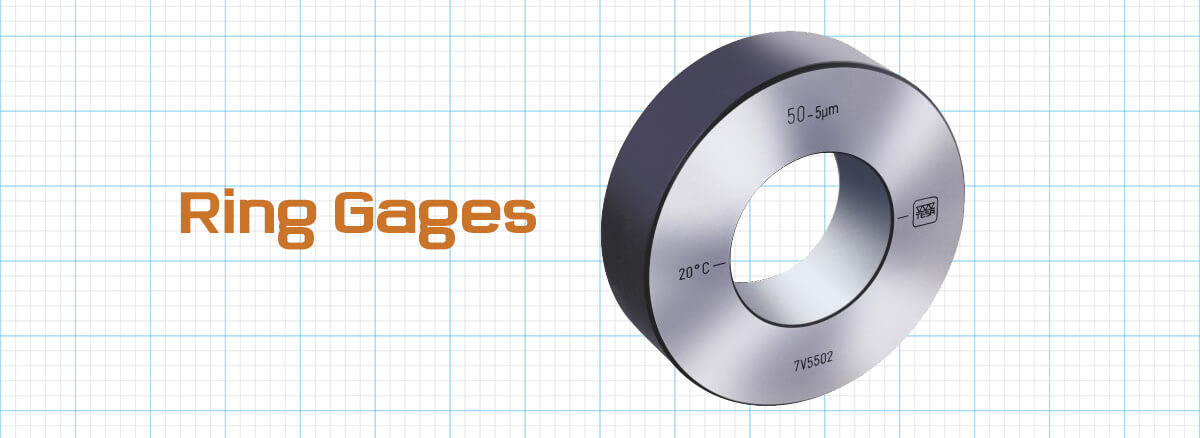What are ring gages, and what are they used for? Well, ring gages are in and of themselves precision measurement tools, but go a step further by serving as a setting master for other gages as well. In this way, ring gages can be used to complete both direct and indirect gaging. Additionally, ring gages come in three distinct types. They can be go, no-go (sometimes known as not-go), and setting or master gages. Each of these is similar in function, but carries distinct characteristics for its intended purpose. By the end of this blog, we hope to illuminate for our readers the point of ring gages and why they are a must-have for metrologists.
A ring gage is a precision measurement instrument used in industrial manufacturing. With a perfectly symmetrical design, a ring gage is constructed of thermally stable material and built with a precise internal diameter. Ring gages function as either direct or indirect gages. In the role of a direct gage, ring gages are used to measure the size and/or roundness of a part. In the role of an indirect gage, the ring gage is used as a reference point to set other instruments. When used in a direct manner, ring gages are either of a go or no-go variety, whereas when used indirectly, a ring gage is known as a master setting ring.
Another name for direct gaging is fixed-limit gaging. In this process, a tool, or a ring gage is used to establish the physical limit that can be accepted for the outside diameter of a part. Go ring gages are a fixed limit gage whose limit is based on the high tolerance of the part which is being inspected, while having a unilateral minus tolerance. A no-go ring gage, on the other hand, is a fixed-limit gage whose limit is based on the low tolerance while having a unilateral plus tolerance. Essentially, a go ring gage is used to see if a part is oversized, while a no-go ring gage is used to see if a part is undersized. When placed through a go gage, an oversized part will not be able to pass though, is deemed the incorrect size, and is remade. When placed through a no-go gage, an undersized part will pass through, is considered the incorrect size, and is remade. Another use of a ring gage in this setting is to check the roundness of a part against the roundness of the ring gage itself. This feature may be missed when using a micrometer to test exactness. Each of these is considered a form of direct gaging.
The process of indirect gaging differs from that of direct gaging in that the ring gage is used in conjunction with another measurement tool, often a bore or air gage. In indirect gaging, the ring gage is known as the master ring gage, or the setting ring. A setting ring has a bilateral tolerance, as opposed to the unilateral tolerances of the go and no-go ring gages described above. The mathematical definition of a bilateral tolerance is one half of the specified tolerance plus/minus the designated size, which does not deviate more than 0.00001in from the nominal size of the master ring gage.
The ring gage, whether a go ring gage, a no-go ring gage, or a setting ring, is a very useful metrology tool that works in both direct and indirect modalities. When being used indirectly, a setting ring ought to be recalibrated itself approximately once per year. However, when being used directly, ring gages ought to go through recalibration more regularly due to more frequent one-on-one use. A very versatile tool, having a set of ring gages can help ease your measurement processes with the flexibility to be used across multiple contexts and in different ways.

